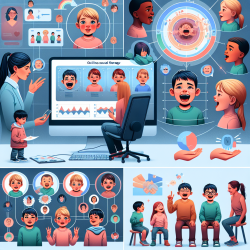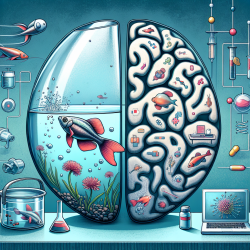Introduction
In the realm of speech-language pathology, particularly in online therapy services for schools, making data-driven decisions is crucial for improving outcomes for children. The research article titled A Dynamic Social Relations Model for Clustered Longitudinal Dyadic Data with Continuous or Ordinal Responses provides insights that can be pivotal in enhancing therapy practices. This blog aims to distill the findings of this research and suggest practical applications for practitioners.
Understanding the Dynamic Social Relations Model (DSRM)
The Dynamic Social Relations Model (DSRM) is an extension of the Social Relations Model (SRM), which is widely used to analyze interactions between individuals. The DSRM incorporates longitudinal data and dynamic structures, allowing practitioners to distinguish between relationship effects, temporal fluctuations, and measurement errors. This model is particularly beneficial in understanding how individuals respond to their partner's behavior over time, providing a more nuanced view of interpersonal interactions.
Key Findings and Their Implications
The research highlights several key findings:
- Actor and Partner Effects: While individual behaviors (actor and partner effects) are significant, the relationship between individuals in a dyad plays a more substantial role in determining interaction outcomes.
- Longitudinal Data Benefits: By using longitudinal data, the DSRM can separate time-invariant processes from time-varying ones, providing clearer insights into interpersonal influences.
- Proximal Triggers: The model identifies 'proximal triggers,' where one person's behavior at a previous observation influences another's subsequent behavior, highlighting the dynamic nature of interactions.
Practical Applications for Practitioners
For practitioners in online therapy, these findings can be transformative:
- Enhanced Interaction Analysis: By applying the DSRM, therapists can better understand the dynamics within student interactions, allowing for more targeted interventions.
- Improved Outcome Predictions: Understanding the role of proximal triggers can help therapists predict and influence future behaviors, leading to more effective therapy sessions.
- Data-Driven Decisions: Utilizing longitudinal data allows therapists to make more informed decisions, tailoring therapy to the unique needs of each student based on their interaction patterns.
Encouraging Further Research
While the DSRM offers significant insights, further research is encouraged to explore its applications in various settings. Practitioners are urged to consider how these models can be integrated into their practice to enhance therapy outcomes continually.
Conclusion
The Dynamic Social Relations Model provides a robust framework for understanding and improving interactions in online therapy settings. By leveraging these insights, practitioners can enhance their practice, ultimately leading to better outcomes for children. To delve deeper into the research, please read the original research paper: A Dynamic Social Relations Model for Clustered Longitudinal Dyadic Data with Continuous or Ordinal Responses.










